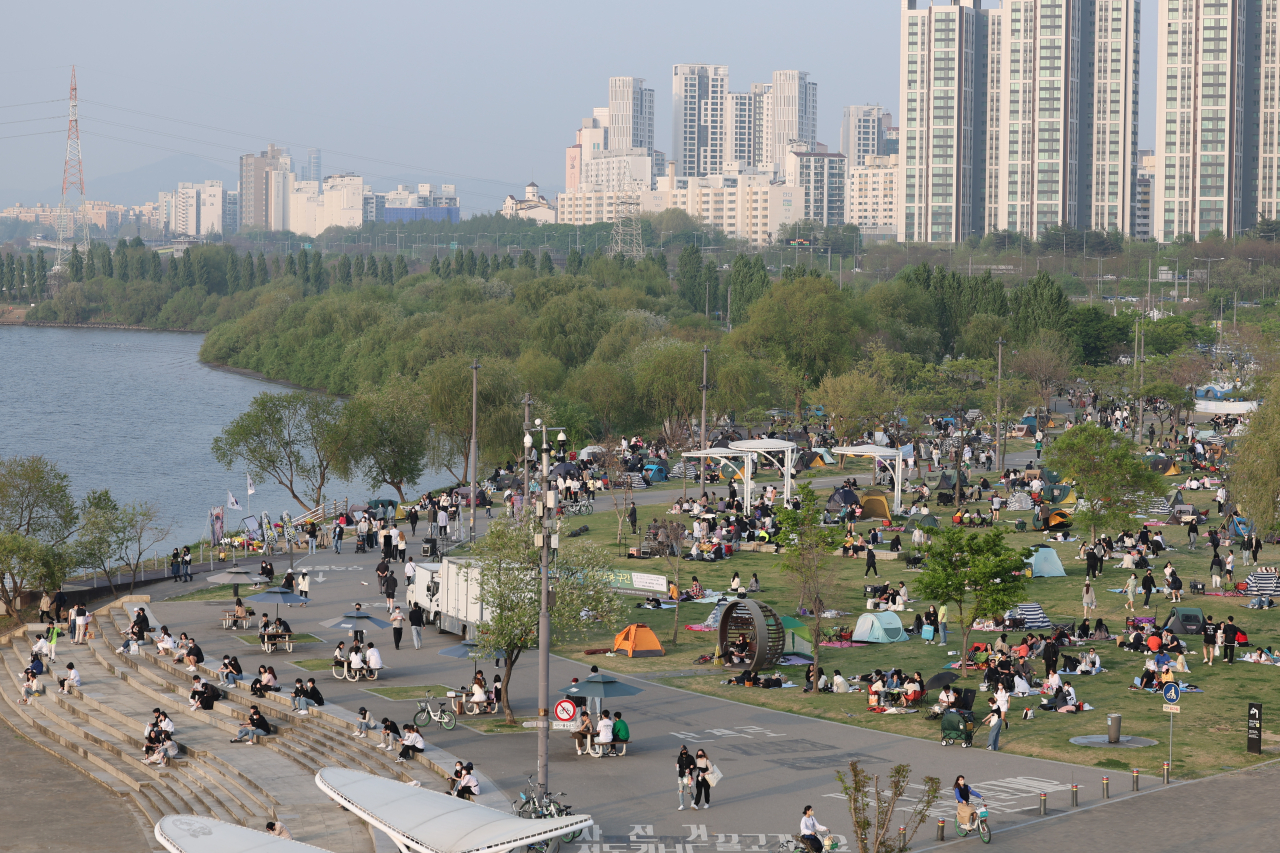[Newsmaker] More versions of BA.2 omicron gaining ground in Korea
At least 52 dead after suspected reinfection
By Kim ArinPublished : April 26, 2022 - 15:48

The Korea Disease Control and Prevention Agency said Tuesday new versions of omicron’s BA.2 subvariant were making up increasingly larger proportions of circulating variants in the country.
According to the KDCA’s weekly analysis posted Tuesday, BA.2, which was first spotted here in late January, showed up in 94.2 percent of cases in the third week of April.
In a further breakdown of variants, BA.2.3 represented most of cases at 63.5 percent. BA.2 had the second-largest share of cases at 16.8 percent followed by BA.2.12’s 10.3 percent, BA.2.5’s 1 percent, and BA.2.10’s 2.4 percent.
Lee Sang-won, the leader of the KDCA’s epidemiological analysis team, told Tuesday’s briefing that with the exception of BA.2.12.1 which has not been discovered in Korea yet, no other variations of BA.2 were associated with worrying increase in transmissibility.
“BA.2 was known to spread faster than the original omicron virus, BA.1. BA.2.12.1 is believed to be about 20 percent more transmissible than BA.2,” he explained.
The KDCA said recently that roughly 1,600 to 2,000 cases have been whole-genome sequenced per week. As of April 20, a total of 13,138 counts of whole-genome sequencing have been conducted this year.
“After the omicron-driven wave of patients, health agencies including the (European) CDC are saying sequencing rates are no longer meaningful,” said Kim Eun-jin, the head of the agency’s surveillance analytics team, at Tuesday’s briefing. She said that Korea was “sequencing far more” than the globally recommended standard.
But the KDCA data shows Korea has sequenced less than 0.1 percent of cases since January, which is far below the World Health Organization’s recommendation of 5 percent. The dearth of sequencing could hinder the country’s ability to monitor the presence of new variants in the community, experts have warned.
Kim added that about 50 percent of “imported” cases, or cases found among international passengers, were subject to sequencing. Just 766 out of 3,834,382 cases logged so far in April were classified as imported.
From the start of the pandemic through April 16 this year, there have been 55,906 cases of suspected reinfection here. Most or 55,841 of those cases were second infections, but 65 were presumed to have been infected for the third time.
Among them, at least 72 developed severe symptoms and 52 died, the KDCA said. The case fatality rate after a suspected reinfection stands at 0.09 percent, which is lower than the overall case fatality rate of 0.13 percent.
A suspected reinfection is defined as a positive test after 90 days have elapsed since a prior infection, with or without symptoms. A positive test following symptoms or exposure at least 45 days from the first infection is also counted as a suspected reinfection.
The KDCA has yet to confirm whether any of the suspected cases are a genuine reinfection with a different variant.
Lee of the KDCA’s epidemiological analysis team said that Korea has been seeing about a 30 percent weekly decline in new cases over April.
In the last two weeks Korea counted an average of 107,515 cases and 183 deaths each day, down from 244,423 cases and 321 deaths seen daily in the previous two-week period from March 29 to April 11.
While the omicron wave is receding, the risk of another variant of concern fueling a new surge was still present, Lee said, which makes predicting the future course of the pandemic difficult.
“Some countries like the US, which experienced high case rates in the first two years of the pandemic, are witnessing relatively stable trends now. On the other hand, Korea and Hong Kong that did not see that many patients previously saw large surges in March,” he said.
“But we can expect the pattern of declining cases to continue for the next couple of months.”
By Kim Arin (arin@heraldcorp.com)







![[KH Explains] How should Korea adjust its trade defenses against Chinese EVs?](http://res.heraldm.com/phpwas/restmb_idxmake.php?idx=644&simg=/content/image/2024/04/15/20240415050562_0.jpg&u=20240415144419)











![[Today’s K-pop] Stray Kids to return soon: report](http://res.heraldm.com/phpwas/restmb_idxmake.php?idx=642&simg=/content/image/2024/04/16/20240416050713_0.jpg&u=)